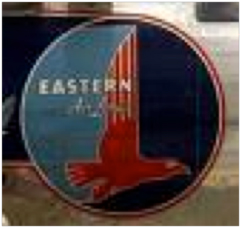Eastern Airlines before the Deregulation Act of 1938 – May 6, 2011
Transcontinental and Western Air, Inc. – The Ads Tell a Story Part Eight – April 22, 2011
April 22, 2011Eastern Airlines – May 13, 2011
May 13, 2011Eastern Airlines
Eastern Airlines before the Deregulation Act of 1938
Eastern Air Lines originally began as Pitcairn Aviation, and was owned by Harold F. Pitcairn, in the 1920s and was just a small mail carrier under the control of the U.S. Post office. In 1927, the airline won a government contract to fly a Pitcairn, PA-5 Mailwing single-engine aircraft between New York and Atlanta and connecting to Florida.
Time for a history lesson—-

The Pitcairn PA-5 pictured above is on display in the Smithsonian National Air and Space Museum and has a very interesting history. The Pitcairn PA-5 Mailwing was designed to carry air mail along the routes of the eastern United States. Efficient and economical, it helped build the route structure for what would ultimately become Eastern Air Lines.
The Mailwing NC-2895, built in 1927, was the prototype for a series of Pitcairn mail planes. It combined a square-steel-tube fuselage with wooden wings, both covered by fabric. After it became obsolete as a mail plane, this airplane served several private owners, survived a crash, and saw use as a crop-duster.
It was repurchased by employees of Eastern Air Lines, restored, and presented to company president Capt. Edward V. Rickenbacker, who later donated it to the Museum. The plane was restored in 1975 by veteran Eastern pilot Capt. Joseph Toth.
Now back to our story—-
By 1929, the carrier had changed hands and was purchased by Eastern Air Transport. It wasn’t until 1930 that the airline added passenger service to its route and was soon flying across sixteen eastern seaboard cities including Savannah and Augusta in Georgia. This airline traversed all around Philadelphia, and during the 1930s, it was the primary carrier on the New York-Florida route that went through Atlanta. Unlike other carriers of the decade, Eastern Air Lines was the first national airline to turn a profit on passenger operations.
Even though the Air Mail Act of 1934 had broken up all of the major aviation holding companies in the United States, the airline had established itself as one of the “Big Four” – which included United Airlines, American Airlines and TWA — primarily because its main route system was still a product of the airmail network that had been subsidized by the federal government. Eastern Air Lines maintained its status for almost half a century.
When the government awarded the airline new contracts in 1934, it changed its name from Eastern Air Transport to Eastern Air Lines and was owned by General Motors. It wasn’t until 1938 that the airline would be positioned for a period of rapid growth. At this time, the airline was purchased by World War I flying ace Eddie Rickenbacker. Rickenbacker purchased the airline with a check for $3.5 million from Alfred P. Sloan, and was heavily focused on innovation and growth.
Next week we continue the series on Eastern Airlines and I will let the ads of the time tell the story. Until then take care and fly safe.
Robert Novell
May 6, 2011


